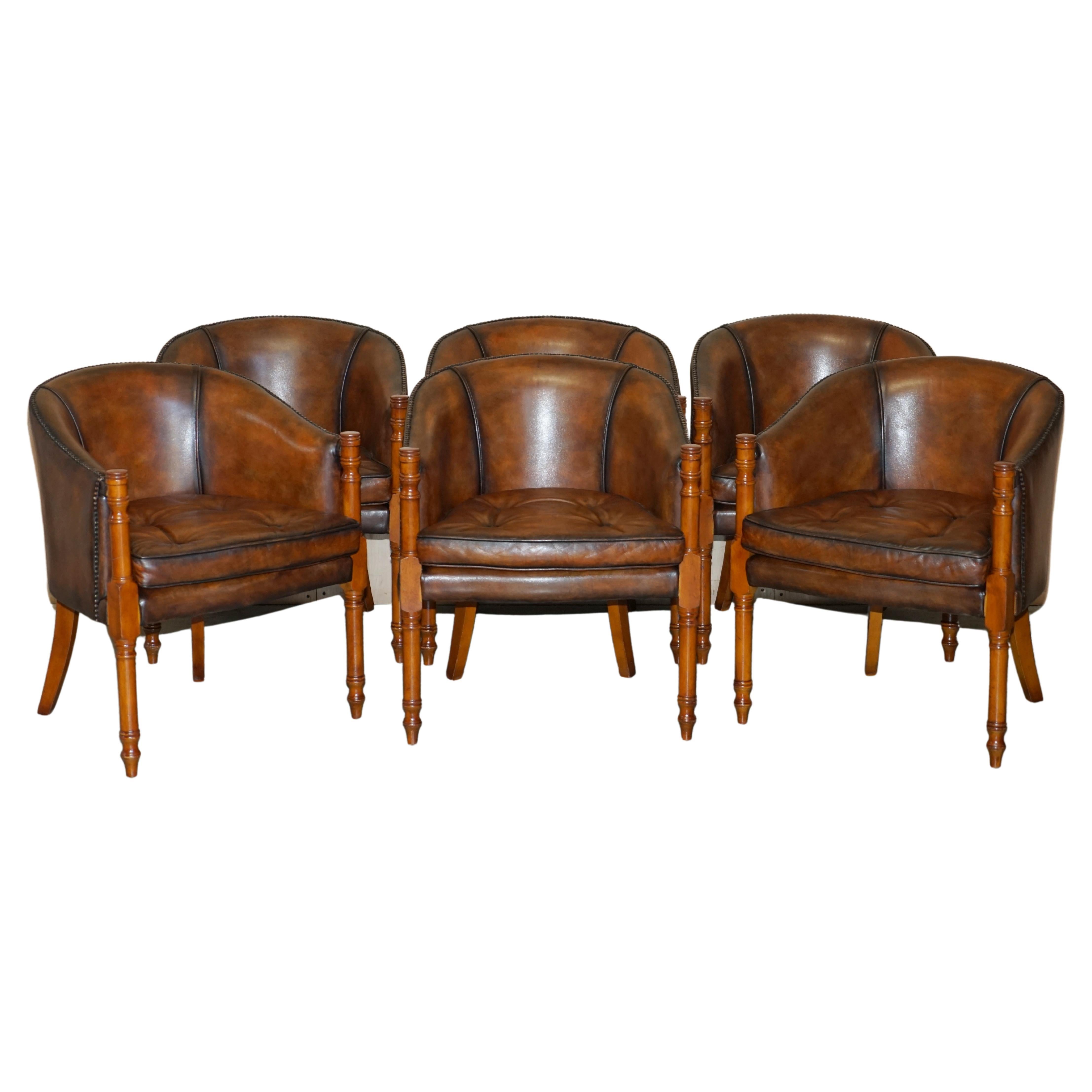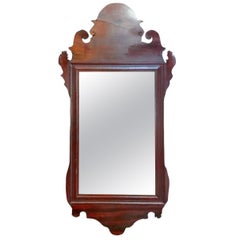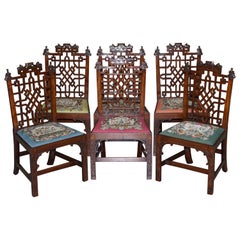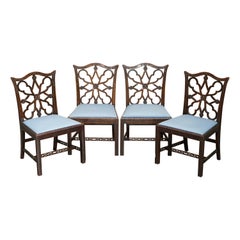Questions & Answers
Our trusted network of 1stDibs sellers answer common questions
What makes a chair a Chippendale?
1 Answer

Chippendale chairs are chairs made in the American Chippendale style of furniture, dating from the 1700s and named after famed London cabinetmaker Thomas Chippendale. Related to but distinct from the Queen Anne style, Chippendale furniture endures to this day. On 1stDibs, shop a collection of vintage and contemporary Chippendale chairs from some of the world’s top sellers.
1stDibs ExpertApril 5, 2022
Related Questions
- What is a Chippendale style chair?1 Answer
- How can you tell if a chair is Chippendale?1 Answer
- How do I renew a rattan chair?1 Answer
- Are rattan chairs worth it?1 Answer
- Can I refinish rattan chairs?1 Answer
Shop for Thomas Chippendale Furniture on 1stDibs
18th C. Chippendale Mahogany Mirror, American, English Style. Original Mirror.
By Thomas Chippendale
Located in Vero Beach, FL
18th C. Chippendale Mahogany Mirror, American, English Style Wall Mirror. Original Glass
Gorgeous antique solid Mahogany American Chippendale...
Category
Antique 18th Century American Chippendale Wall Mirrors
Materials
Mahogany
Six Imporatant George III 1760 Thomas Chippendale Chinese Pagoda Dining Chairs
By Thomas Chippendale
Located in West Sussex, Pulborough
We are delighted to offer this important suite of museum quality, George III circa 1760-1765, Thomas Chippendale Chinese Pagoda top dining chairs with the original embroidered seat pads
Where to begin, if you’re looking at this listing then the chances are you know exactly how significant this suite is. Thomas Chippendale was simply put, the most important furniture designer in history.
A similar suite of twelve chairs with one reproduction that were attributed to Chippendale...
Category
Antique 1760s English George III Dining Room Chairs
Materials
Hardwood
FOUR ANTIQUE COLONIAL THOMAS CHIPPENDALE HARDWOOD FRET WORK CARVED DiNING CHAIRS
By Thomas Chippendale
Located in West Sussex, Pulborough
Royal House Antiques
We are delighted to offer this important suite of museum quality, antique Colonial Rosewood Thomas Chippendale, fret work carved dining chairs
Please note the delivery fee listed is just a guide and covers London only for the UK and local Europe for the rest of the world, if you are outside of this area please send me your address and I will provide you with an accurate quote
Where to begin, if you’re looking at this listing then the chances are you know exactly how significant this suite is, Thomas Chippendale was simply put, the most important furniture designer in history, these chairs are the only Colonial examples I have ever seen and in Rosewood no less, they weigh roughly three times more than a standard dining chair of the same style and size, they are very substantial
The chairs are late 19th century circa 1880-1900, they are of course based on the original 18th century examples, the carving is exquisitely executed and the chairs look sophisticated and elegant from all angles
The suite has been sympathetically restored to include a deep clean, hand condition wax and hand polish, the seat covers have been left as they are, they are ok, I can have them reupholstered for the cost price to anything the new owners wish
Literature
Two chairs illustrated in Tabellenbuch Holztechnik, Hamburg, 2013, p. 271.
Exhibited
Ten chairs on loan to Birmingham Museums circa 1985-2010 and exhibited at Aston Hall, Birmingham, where photographed in situ..
Dimensions
Height:- 93cm
Width:- 56cm
Depth:- 53cm
Seat height:- 47cm
Please note all measurements are taken at the widest point.
Lot Essay
These chairs are closely related to those in two recognised Chippendale commissions: Sir Gilbert Heathcote (d. 1785), 3rd Baronet for Normanton Hall, Rutland and William Crichton-Dalrymple, 5th Earl of Dumfries (4th Earl of Stair, 1699-1768) for Dumfries House, Ayrshire.
THE RELATED CHAIRS
The chairs are of identical decoration to the set of two armchairs and ten single chairs, circa 1765, formerly at Normanton Hall (1). In 1759, Sir Gilbert Heathcote (d. 1785), 3rd Baronet, succeeded to the vast inheritance established by his grandfather, also Gilbert, 1st Baronet (1652-1733), who was reputed to be ‘the richest commoner in England’ (2). The 3rd Baronet employed both Chippendale Senior and his son, Chippendale Junior, in the furnishing of his Palladian mansion, Normanton Hall in Rutland, and his London houses, 29 Grosvenor Square, London and Browne's House at North End, Fulham. Surviving Chippendale accounts, although incomplete, show that the firm was working periodically for members of the Heathcote family from 1768 to 1821. Most of the furniture listed in these accounts was intended for Browne’s House, although after 1798 when the family relinquished this residence some of the furniture was moved to Normanton Hall. The latter was sold in 1924, and any furniture not included in the Normanton Hall sale was taken to the Earl of Ancaster’s seat at Grimsthorpe Castle, Lincolnshire. Chippendale’s earliest invoice for Sir Gilbert Heathcote records the acquisition in 1768 of ‘6 India Back and arm chairs Japand to imitate the Bamboe’, signifying how the family embraced the highly fashionable chinoiserie taste. Although the Normanton chairs cannot be conclusively identified in the extant Chippendale accounts, their form and ornamentation led Christopher Gilbert to suggest that they were possibly by Chippendale (3).
The set of four mahogany chairs at Dumfries House have nearly-identical pagoda-form cresting rails and identical terminals but differ in the arrangement of the 'Chinese' paling in the backs and side panels. Although no documentary evidence for the Dumfries chairs survives, in their execution and sophisticated carving of the toprails, they are extremely close to Chippendale’s hand.
Another near-set of closely related chairs is at Saltram House, Devon, where Chippendale worked between 1771-2; these dates are based on payments in John Parker's cash account book, and probably do not reflect a true picture of the entire commission as Parker often paid tradesmen by banker's draft (4). Comprising two armchairs and seven single chairs, this set, circa 1765, is made of padouk, and has been described by the National Trust as ‘Chinese Export’ (5). The set was returned to Saltram in 1951 having been accepted by H.M. Treasury in lieu of full payment of Death Duty from the Executors of Edmund Robert Parker, 4th Earl of Morley (1877-1951). Some of the chairs are currently on display in ‘The Chinese Chippendale Bedroom’.
A further set of four padouk chairs of the Saltram pattern was almost certainly at Kenwood House, London; some of these are recorded in 18th century inventories drawn up by Lord Mansfield. This set was removed to Scone Palace, Perth, prior to the auction at Kenwood in 1922, and subsequently sold from ‘Scone Palace and Blairquhan: The Selected Contents of Two Great Scottish Houses’, Christie’s, London, 24 May 2007, lot 298.
Another pair of padouk chairs of this model sold ‘The Collection of Peggy and David Rockefeller’, Christie’s, New York, 10 May 2018, lot 647 ($193,750 inc. premium).
THE DESIGN
Conceived in the Chinese manner expounded by William and John Halfpenny in Rural Architecture in the Chinese Taste (1752), and Sir William Chambers in his Designs of Chinese Buildings, Furniture, Dresses, Machines and Utensils (1757), the pattern for this set of ‘Pagoda’ chairs relates to nine designs for ‘Chinese Chairs’ in the 1st edition of Chippendale’s Director (1754); the cabinet-maker describes these designs thus:
Plates XXIII, XXIV and XXV are nine Chairs in the present Chinese manner, which I hope will improve that taste, or manner of work; it having yet never arrived to any perfection; doubtless it might be lost without feeling its beauty: as it admits of the greatest variety, I think it the most useful of any other. The sizes are all specified on the designs. The three last (No. XXV.) I hope will be well received, as there has been none like them yet made.
The Georgian period witnessed the proliferation of such railed and pagoda-crested chairs in both the ‘picturesque’ Chinese tea pavilions of landscaped parks as well as in fashionable apartments hung with ‘India’ paper. The geometric ‘Chinese’ feet of these chairs are also found on a set of pedestals...
Category
Antique 1880s English Victorian Dining Room Chairs
Materials
Hardwood
Pair Of Carved Mahogany Armchairs By Thomas Chippendale
By Thomas Chippendale
Located in New Orleans, LA
This set of two carved mahogany chairs was crafted by the inimitable and famed Thomas Chippendale. The yellow upholstered seats complement the deep mahogany beautifully, creating an ...
Category
Antique 18th Century English Chippendale Armchairs
Materials
Upholstery, Mahogany
Original Thomas Chippendale George III Hardwood Architect's Work Desk Table
By Thomas Chippendale
Located in West Sussex, Pulborough
We are delighted to offer for sale this very rare original Thomas Chippendale George III circa 1780 Architects writing table or desk
A v...
Category
Antique 1780s English George III Desks and Writing Tables
Materials
Hardwood
Georgian circa 1760 Thomas Chippendale Phoenix Giltwood Mirror
By Thomas Chippendale
Located in Pulborough, GB
We are delighted to offer for sale this Stunning Georgian Thomas Chippendale Phoenix Wall Mirror.
This Georgian circa 1760 Thomas Chippendale Phoenix giltwood mirror is a magnific...
Category
Antique 1760s British Georgian Wall Mirrors
Materials
Giltwood


